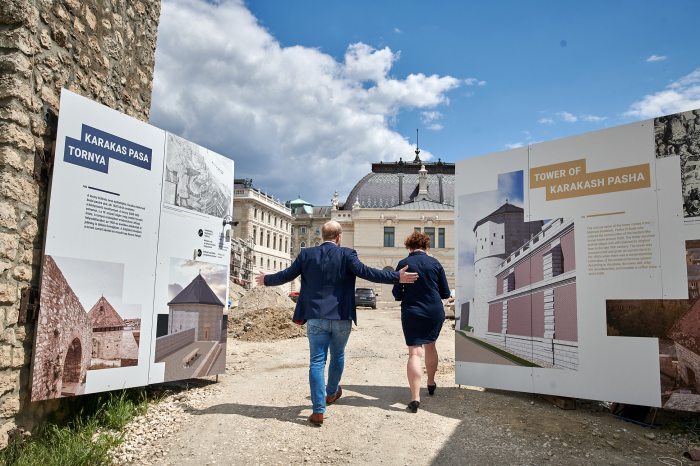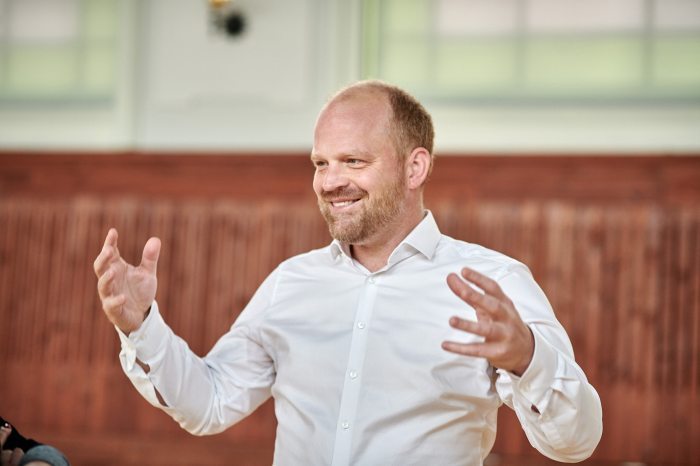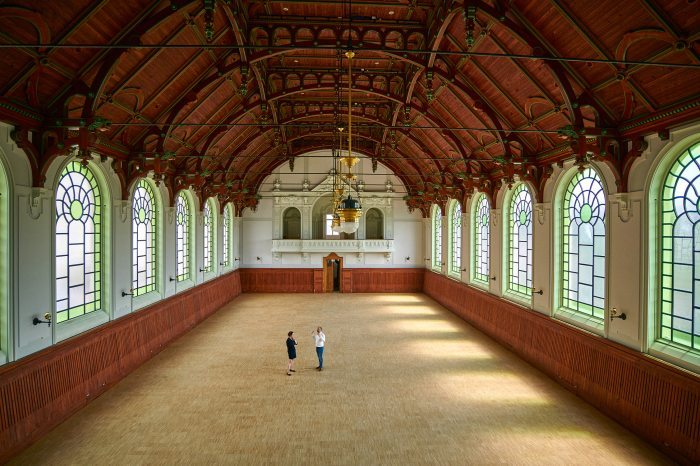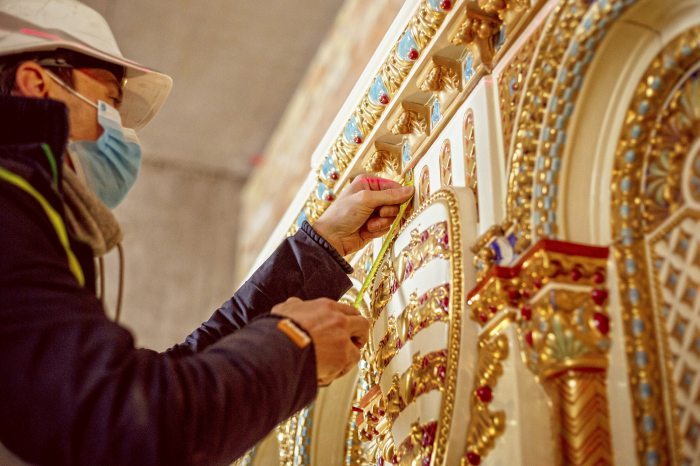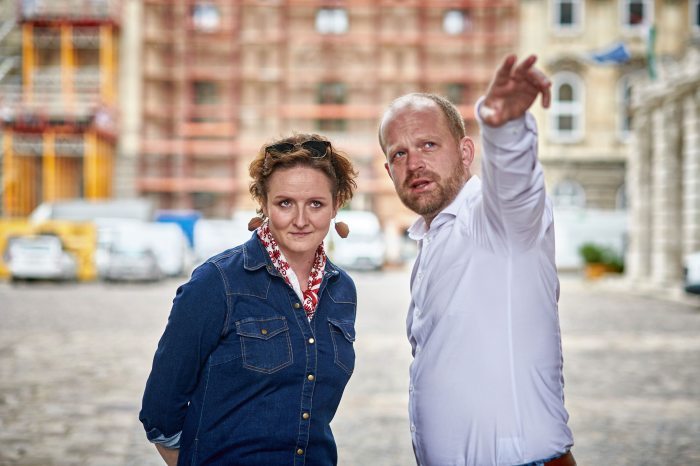"Hungarians still live, Buda still stands!” – a conversation with Government Commissioner Gergely Fodor on the renovation of the Buda Castle Palace
As Hungarians, we have many experiences of the Buda Castle. Class excursions, family visits, long studies in the Széchényi Library, exhibition experiences, performances in the Castle Theatre... The sight of decaying ruins, empty, badly restored buildings (think of the windows on the palace, which were supposed to proclaim the glory of socialist industry) are all usually part of these memories. But we lived in a world like that, there were many things that did not add up, and we put this one among them. The fact that nobody dared to touch the Buda Castle after the regime change was annoying. More than twenty years have passed and we still haven't done anything with the Castle, which symbolizes Hungarian statehood in so many ways.
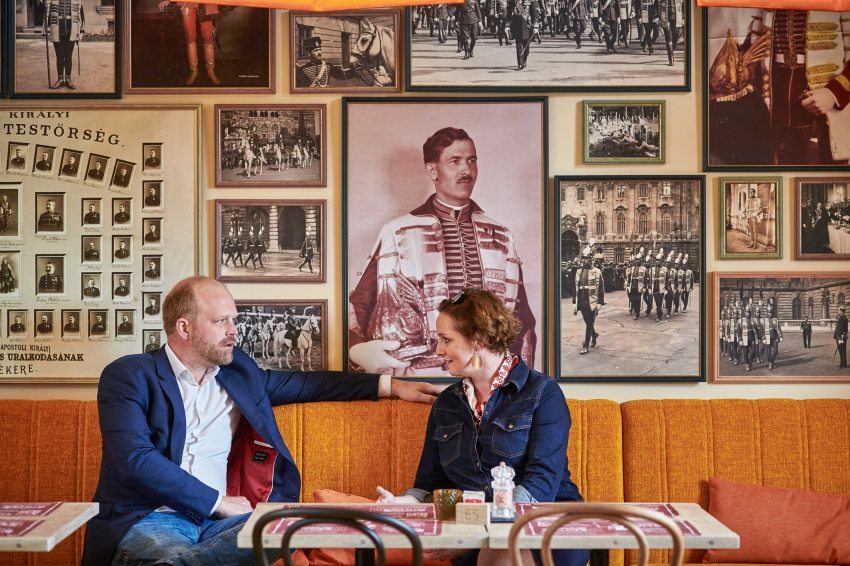
The precious spaces of the palaces were occupied by dusty storerooms of libraries and museums, and tourists arriving in buses could either queue up for the five-seater lifts up to the Széchenyi Library or risk the possibility of a twisted ankle on the deserted walkways. The surfaces of the castle's ramparts seemed to have been abandoned, first and foremost the Várkert Bazár (Castle Garden Bazaar), which is also an important part of the Danube panorama. We could have the feeling that we had a castle, a prominent part of the Budapest panorama, part of the world heritage, but it was falling into disrepair. It has no owner.
Of course, the renewal of the Castle is no small task, and not just in financial terms. It takes thought, vision, strategy, and of course determination, self-consciousness, and a lot of determination. For some time now, visitors to the Castle have been witnessing a period of continuous construction. A Hungarian old man, who emigrated to the West but has now moved back, is happy to see this, and regularly visits the castle from his country house to observe the rebuilding of the scenes of his childhood. He quickly thanks Gergely Fodor, the government commissioner, who guided us around the castle and introduced us to its history, from the 13th century onwards.
For that is obviously the time when the history of Buda Castle began, in the mind of King Béla IV, at the time period after the Tatar invasion. He decided to build here, by the Danube, at the northern tip of the Castle Hill. Periods of construction and destruction followed in succession. The period of the greatest construction was the period of Louis the Great, Sigismund of Luxembourg and King Matthias. It was then that the Buda Castle became a significant place, this was its first golden age. After the Battle of Mohács and the conquest of Buda, the Turks took control of the area, and the Pasha of Buda settled here, establishing a city centre by demolishing churches or converting them into mosques. After the expulsion of the Turks, large-scale reconstruction began again under Queen Maria Theresa, with which the Hungarians hoped to impress the Habsburg monarch by encouraging her to spend more time in Buda. But even after that, the Habsburgs did not make much use of the imperial centre. During the reform era, many new functions were installed here, from monastic orders to an observatory.
During the 1848-49 War of Independence, the palace was severely damaged and partially burnt down. In the era of passive resistance, the ruins of Buda, a reminder of the bloody defeat of the War of Independence, were left spectacularly untouched - the only improvement was the erection of a statue of the bloody-handed Hentzi on Dísz Square. After the Compromise of 1867, relations with the Habsburg rulers were settled, and the period of construction could begin again. And on quite a scale: it is said that Budapest was the second fastest growing and developing city in the world at the time, after Chicago. The Castle Hill was not left out of this huge development.
Miklós Ybl was asked to enlarge the Buda Castle Palace in 1889, and he himself appointed Alajos Hauszmann, the eponym of the present-day reconstruction programme, as his successor. In about 10 to 15 years, by 1905, the northern wing of the palace and the numerous buildings attached to it, the Royal Riding Hall, the Main Guard, the Stöckl Staircase, the southern and western gardens were completed. The Castle became beautiful and majestic, the crown jewel of the Monarchy in its heyday.
"We would like the history of the Buda Castle to have ended at the turn of the century," says the government commissioner with a half-smile, "but unfortunately the Second World War came, and Nazi Germany declared Budapest a fortress that had to be defended at all costs from the conquering Russian army. Instead, they wanted to save Vienna from destruction. We now know that they succeeded in neither." The problem of the badly damaged Buda Castle was neither spat out nor swallowed by the communist authorities, as the reports of the Central Committee attest. Finally, on the suggestion of a delegation of Polish architects, an attempt was made to restore and preserve the Castle's Queen Maria Theresa period appearance - thanks to which at least some of the early architectural monuments have been preserved. Because everything else was destroyed. In many cases, after decades of delay, the damaged buildings were not repaired, but blown up and demolished. Communism did more damage to the Castle than the war.
After the change of regime, the northern side of the Várhegy started to develop nicely, but the palace quarter remained untouched, with neither money nor will. It was the first Orbán government that decided to renovate the Sándor Palace, and the President of the Republic moved here during the next government. It was the next Orbán government that started and completed the renovation of the Várkert Bazaar.
"We regarded this as a kind of model project," continues Gergely Fodor, as we walk around the current construction sites, "We needed a successful project to experience that it is possible to restore an area that has been neglected for decades to its former glory and to give it back to visitors. That's how the renovation of the Carmelite Monastery, the Main Guard, the Matthias Fountain and the Riding Hall were completed."
The government commissioner and the National Hauszmann Programme he leads have a 12-year plan, the first third of which is due to expire in 2022. The basis of the plan is the state of the Castle in 1905, its last heyday.
During our walk, the biggest construction work is underway in the south connecting wing of the palace, the reconstruction of the St Stephen's Hall, a very special and legendary historical space of the palace, which was (and will be) the pinnacle of Hungarian craftsmanship. The works in and around the Csikós gardens are planned to be completed in autumn, after the formal opening scheduled for 20 August 2021.
This year, work will begin on the renovation of three other important sites: the former headquarters of the Red Cross Society on the corner of Dísz Square, the General Headquarters designed by Mór Kallina and the former palace of Archduke Joseph, a demolished building on the Taban side of St George's Square. The latter was allowed to fall into ruin for purely ideological reasons during the decades of communism, in the spirit of "erasing the past for good": it was used as a workers' hostel, then rented out for film shoots, and finally blown up in 1968 - although experts say it would have been easier to rebuild than to make it disappear.
Gergely Fodor sees his and his colleagues' task as an opportunity to make up for what previous generations have lost. He sees it as a kind of historical necessity that we should now have another period of building after the destruction and devastation.
"How shall we imagine this complex work?" - I ask the Government Commissioner. "We are working along a well-defined plan. The legal status of the sites had to be sorted out, a unified ownership structure had to be established. We had to create a functioning organisation of excellent professionals who would not only manage the construction works but also run the whole site. We have a large team of gardeners, for example, with whom we have tried to make these spaces liveable and enjoyable through landscaping, creating wildflower meadows and benches in the areas visited by tourists. Since this is not a conventional real estate development, but rather historical reconstruction of the Castle, we have prepared historical and scientific documentation for each building. A team of experts is digging up a wide variety of bills of lading, invoices and colour samples for an authentic reconstruction. From the latter, we know, for example, what exactly the famous Hauszmann green was like, which, for example, appears in many interior design elements in the Riding Hall. At the same time, we also have to take into account 21st-century aspects appropriate to the renewed functions - for example, we have to ensure accessability, and of course the interior of the Main Guard is now designed differently than it was 100 years ago, since it is no longer a puritan barrack building but a café and restaurant."
As we walk among building materials, machines, planks and scaffolding, Gergely Fodor is greeted by craftsmans here and there. From the conversations, it is clear that for the craftsmen working in the St. Stephen's Hall - whether they are making the tiles, the chandelier or the woodwork - this work is a great honour, one of the pinnacles of their careers. The value created here is hard to quantify.
In psychotherapy, we are told to learn to be in solidarity with ourselves, to understand and accept our past, and to be bravely proud of what we have a reason to be proud of. This can be true not only for individuals but also for communities. Such a community is a nation. In restoring the Buda Castle to its turn-of-the-century heyday, we are part of this therapeutic process.
Why visit the Castle?
The St Stephen's Hall and the southern connecting wing of the palace were opened on August 20th.
You can also visit the exciting interactive exhibition "The Hauszmann Story" in Building A. Here you can have a coffee and a pastry in the restaurant next to the also renovated Matthias Fountain in the Main Guard House. And, of course, you can check on the progress of work at the other sites listed in the article. And if you want to take part in a guided tour, we recommend the website budaivarsetak.hu, where you can sign up for thematic, very informative guided tours of various sites in the Castle.
Képmás magazine is launching a new series called Public Treasure, in which Kata Molnár-Bánffy, the publisher of Képmás, talks to dedicated people whose successful work can be of interest to many, and is a Public Treasure, as the title of the series suggests: a common issue, something we want to take care of.
